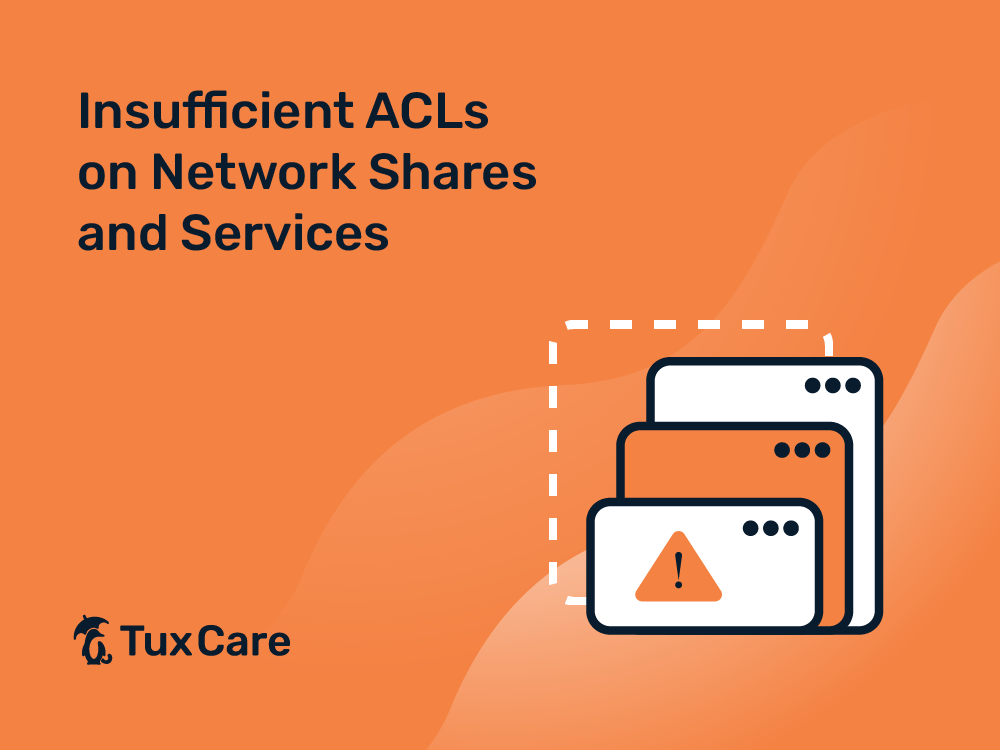Insufficient ACLs on Network Shares and Services
This article is part of a series where we look at a recent NSA/CISA Joint Cybersecurity Advisory on the top cybersecurity issues identified during red/blue team exercises operated by these organizations. In this article, you will find a more in-depth look at the specific issue, with real-world scenarios where it is applicable, as well as mitigation strategies that can be adopted to limit or overcome it. This expands on the information provided by the NSA/CISA report.
–
Access Control Lists (ACLs) are fundamental in defining access permissions to network shares and services. Yet, as the National Security Agency (NSA) and the Cybersecurity and Infrastructure Security Agency (CISA) report, insufficient or poorly configured ACLs are a widespread cybersecurity misconfiguration. This article delves into the critical role of ACLs, their common challenges, and strategies to strengthen security through effective ACL management.
Understanding the Role of ACLs in Cybersecurity
ACLs are essential for maintaining data integrity and confidentiality. Insufficiently managed ACLs can lead to unauthorized access and data breaches, making them prime targets for malicious actors.
ACLs can be as granular or high level as necessary – either specifying individual users or entire groups of users. This is useful for fine-grained control, or to ease administration of ACLs at the organizational level. They often reflect, in some fashion, the organizational structure (departments or teams will correspond to specific groups, for example).
The Administrative Aspect of ACLs
Managing ACLs involves a significant administrative effort. For instance, modifying ACLs to reflect changes in access requirements can be a complex process, necessitating either manual updates or automated systems. This overhead can sometimes lead to over-permissive access in the interest of convenience, creating potential security vulnerabilities.
Real-World Risks and Misconfigurations
- Unauthorized Data Access: Attackers exploit ACL weaknesses to access sensitive data on shared drives, using tools like share enumeration or custom malware.
- Ransomware Threats: Ransomware actors employ vulnerability scanning tools to identify and exploit open-access shares.
- Convenience Over Security: Overly broad permissions due to administrative convenience can lead to inadvertent security gaps.
- Inadequate Removal of Access: Often, systems are more efficient at granting than revoking access, leaving potential security risks when users leave an organization.
Best Practices for Effective ACL Management
- Least Privilege Model: Implement ACLs based on the least privilege principle, granting only necessary access.
- Regular Audits and Updates: Continuously review and update ACLs to align with evolving organizational roles and needs. Do look for critical information stored in accessible shares, like credentials or other privileged information.
- Comprehensive Monitoring: Maintain detailed logs for effective detection and investigation of security incidents. Avoid any exceptions (for example, do log administrative changes) to ACLs.
- Automated ACL Management: Utilize software or tools for ACL management to minimize human error and streamline processes.
- Centralized ACL Management: In addition to automation, ACL management should be centralized to facilitate management of permissions and accesses in a single location, rather than spread across multiple systems.
- Group-Based Rules: Manage ACLs based on user groups to simplify administration and ensure consistent access control.
- Thorough Documentation: Keep detailed records of ACL rules, including their purpose, creation date, and author for easier management and review.
- Ease of Integration of Existing ACLs with Third-Party Systems: New systems providing shared resources should integrate with the least amount of friction into the existing infrastructure, rather than requiring customization or special-case scenarios. This requirement will lead to less bugs in the security profile of the organization.
- Emphasize a Strong Culture of Security: More than other misconfigurations, ACLs are vulnerable to convenience shortcuts, as those originate mostly within the IT team. Training and regular reviews should be required.
Final Thoughts
Proper ACL management is pivotal in a robust cybersecurity strategy. Organizations must remain vigilant in setting, reviewing, and updating ACLs, ensuring they effectively mitigate unauthorized access and data breaches.



 Documentation
Documentation Login
Login




